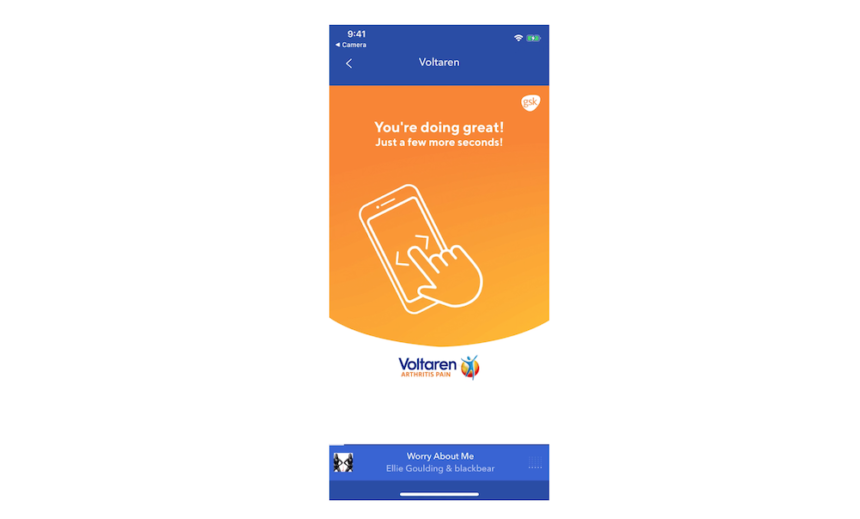Movement is one of the most important things for someone with arthritis, whether that means staying active or finding treatments to ensure they can keep moving.
GlaxoSmithKline (GSK) brought movement to its campaign for over-the-counter treatment, Voltaren Arthritis Pain Gel by partnering with Pandora. That partnership allowed GSK to tap into a mobile phone’s gyroscope and create themed playlists for this effort.
“Voltaren’s brand goal is to help consumers feel the joy of movement,” said Dianna Facchina, senior sales executive at Pandora. “Pandora was a natural partner in that effort due to music’s ability to inspire movement. With both music and Voltaren, osteoarthritis sufferers can really feel the joy of movement.”
The effort tapped into several of Pandora’s marketing tools. One was offering users uninterrupted listening in exchange for viewing an ad or completing a task. Voltaren’s uninterrupted listening activity, however, had a special twist.
Instead of asking Pandora users to answer a survey or tap on the screen to view an ad, the users could activate uninterrupted listening by shaking their phone.
“We understood one of the painful daily activities for an osteoarthritis sufferer involved the moment of the hand,” Facchina said. “Moving their thumb and forefinger can become painful throughout the day, so we wanted to leverage our ability to tap into the phone’s gyroscope. We have a user shake or move the phone instead, which would not require them to use their fingers and that movement would allow them to enter the [uninterrupted listening] experience in a different way.”
The Pandora team also took another step to inspire movement. The team identified a number of common activities among the target audience, like gardening, cycling and cooking, and created playlists to match those activities.
The Voltaren playlists were also filled with songs that matched the average BPM (beats per minute) for each activity.
“Pandora has one of the largest pools of data in streaming. We are able to look at trends, preferences and behaviors to determine how listeners will respond to advertising,” Facchina said. “Our music curation team created playlists with songs specific to the BPM and the heart rate for someone doing that activity, in order to inspire listeners to feel the joy of movement and continue to move while they do that activity.”
The activity playlists are also a way to reach this audience at different points of their day, said Chelsea Campbell, creative director at Pandora.
“The platform speaks to the always-on nature of osteoarthritis. We’re talking to an audience in so many different ways because osteoarthritis is a daily experience that is so pervasive,” Campbell said. “Using these different products allows us to almost mirror or complement that on the platform, to reach them at different moments of their day.”
The campaign launched the first phase in late May. In its first month, the ads reached about 3 million users. The users launched the Voltaren custom stations 76,782 times in the first month and listened for 23 minutes on average.
The Pandora team also praised GSK for embracing audio and integrating the Pandora experience into the national Voltaren campaign.
“This campaign, especially given the timing, represents how important it is to be working together on creative concepting and audio assets early on in strategy,” Facchina said. “It represents how quickly we are transitioning into a world where it is imperative for brands to represent themselves without depending on visuals. Sound and audio can create powerful memories that remain with us for decades. Brands who partner with Pandora can take advantage of that and it can be very powerful, especially in the health industry.”







